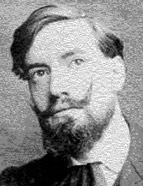

This task of humanistic patriotism was not only the responsibility of schools or means of popular education. Newspapers also had their part to play by giving conscientious lessons. "This absorption in history is indispensable to national consciousness." ("A 'Renascença Portuguesa' e o ensino da História Pátria" [“The ‘Portuguese Renaissance’ and the teaching of National History”], pp. 78-79). A consciousness of being and acting in the temporal fabric. Any republican educator would subscribe these (and other) pages of Jaime Cortesão. The companion of Teixeira de Pascoaes and Leonardo Coimbra in guiding the Portuguese Renaissance had a poetic and civic vision of history. He drew on his poet and philosopher friends (and on Oliveira Martins) for his proposal of a naturalist mysticism in which Art would play the role equivalent to that of the ancient religions. From this new collective poetically religious and anti-Catholic mysticism, Portugal would rise again.
The poet and man of action disseminated and taught history. It was always history as a presentation of examples to be followed in a Republic that ought to be heroically liberating. A novelty, perhaps, resided in the pursuit of "historical paradigms of national virtues", not in the "leading figures", but in the "action of the People in history, the influence of the community, its creative power, its spirit of self-sacrifice, the effort of the humble - their part in the accomplishment of the greatest undertakings and in the glory of the most legitimate heroes". It is not hard to believe that this was the case: the humble people had to be given prominence by the republican propaganda. But from very early on, his "favourite model", his "obsession", was Prince Henry the Navigator, "regarded as the symbol of the flock". ("Prefácio a modo de memórias"). In the exalting but contradictory and conflictual environment of the new political regime, the artist sought an art-action path: the theatre. Years and years later, in 1959, although reticent about marking his shift from literature to history, he wrote: "My vocation as a historian must have been awakened when I wrote the drama in verse O Infante de Sagres, performed in 1916, which was shortly followed by the drama Egas Moniz, also in verse, ". A vocation, perhaps. But an apprenticeship in the craft was still lacking. Indeed, Cortesão made a clear distinction between the two phases in his conceptions of history: before and after his initiation into research. "Until then, history was embodied in the personalities at its helm, the 'Heroes', in line with Carlyle's epic and hypertrophic concept.”
